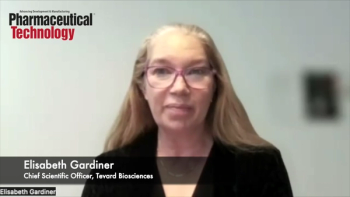
The Role of Flavoring Agents and Taste Modulation Strategies in Drug Development
Key Takeaways
- Improving medication palatability is vital for patient compliance, especially in children and the elderly, due to the bitterness of many APIs.
- Taste modulation strategies, including flavoring agents and bitter blockers, are crucial for developing patient-friendly dosage forms.
This article investigates the role of flavoring agents and taste modulation strategies and describes how these solutions can help to mask unpleasant tastes, improve palatability, and, ultimately, increase patient compliance to drive better treatment outcomes.
The pharmaceutical industry is under increasing pressure to develop medications that are more accepted by patients, with around 40% of consumers agreeing that taste is an important purchase driver for over-the-counter products (1). Improving the palatability of medicines is especially important in children and the elderly. Patients in these cohorts often refuse treatment due to unpleasant tastes or report difficulties in swallowing large pills or bitter liquids, further impacting compliance (2–4).
A bitter pill to swallow
More than 60% of APIs are intrinsically bitter (5), leading to strong repulsion in patients and, consequently, suboptimal treatment outcomes. This poses a significant challenge for drug manufacturers, who must first look at the science behind bitterness to be able to properly address the issue. Bitterness is one of five basic tastes and is thought to serve as a warning mechanism for toxic substances found in nature.
The perception of this taste is influenced by a group of taste receptors called bitter taste-sensing type 2 receptors (TAS2Rs) (5), of which there are 25 known types in humans, each adapted to recognize a broad spectrum of structurally diverse bitter compounds (6,7). When these receptors are stimulated (e.g., by a bitter API), an involuntary aversive response is triggered, telling the body to reject the substance. This instinctive reaction is exacerbated if the bitterness lingers, causing a long-lasting negative experience for the individual.
Even trace levels of bitterness in pharmaceutical formulations can significantly reduce patient compliance, especially in children (3). Minimizing or masking bitterness has, therefore, become a key priority in drug development; understanding how bitterness is perceived at a molecular level, as well as being aware of the different interactions between APIs and TAS2Rs, is vital to developing effective flavor modulation strategies (5–8).
Enhancing formulations to improve compliance
The taste and texture of medications remain a major cause of treatment failure. Taste modulation strategies, including the use of flavoring agents, are now widely used to develop more patient-friendly dosage forms, with certain flavors—such as mint, citrus, and vanilla—extremely popular across various age groups and patient cohorts. However, selecting the right flavor is crucial to complement the sensory properties of the final product, as certain tonalities can mitigate bitterness by masking or distracting the patient from an unpleasant taste. Additionally, some flavors can offer a healthier alternative to sugar syrups, which have traditionally been used to sweeten pharmaceutical formulations, particularly those designed for children.
Modern drug development isn’t limited to flavor enhancement; numerous options exist to improve the palatability of medications. For example, taste modulation technologies are becoming increasingly common and work by changing a person’s perception of taste, including (see Figure 1):
- bitter blockers, which inhibit the perception of bitterness by binding to TAS2Rs, stopping the API from activating them (9)
- bitter maskers, which mask bitterness by competing with patients’ sensory inputs, modifying the overall resulting taste of the medication
- cognitive interference, which provides an interfering taste or mouth feel to distract the body from perceiving the off taste.
The addition of sensates—substances that induce a certain sensation, such as warming or cooling—to medications is another strategy. These ingredients generate a multisensory experience that helps to divert attention from the unpleasant taste of the API or other excipients, such as masking the bitterness of APIs via a cooling agent (10). Finally, encapsulation technologies are also now widely used for making dosage forms more palatable and can work on several levels, including:
- safeguarding flavor compounds throughout manufacturing and storage to extend the flavor's shelf life
- enabling the release of flavor components to closely align with organoleptic perception of the API
- prolonging the taste experience when the dosage form remains in the mouth for an extended period
- preventing negative interactions between flavor components and the API.
Key considerations during drug development
Flavorists can adopt one or a combination of these strategies to develop solutions that ensure products are both effective and more palatable, ultimately promoting better patient compliance with treatment regimens. However, identifying when to incorporate these methods is just as important; flavor profile considerations should be integrated into the earliest stages of drug development to preemptively address taste challenges. Tackling these issues during initial formulation can help pharmaceutical companies avoid costly reformulations and delays in market entry due to taste-related complications.
Perhaps the main consideration when formulating more patient-friendly products is demographics, which play a significant role in flavor preferences. Pediatric and geriatric cohorts, for example, are particularly sensitive to flavors and textures; children often favor sweeter tastes, whereas elderly individuals are sometimes more susceptible to bitterness or metallic notes, due to imbalanced taste perception. The choice of technology is also important in developing flavor solutions, with some techniques—such as encapsulation—extending the shelf life of flavor compounds and protecting them from degradation caused by moisture, oxygen, or heat during manufacturing and storage. Additionally, selecting appropriate maskers, blockers, or tonal adjustments can significantly enhance the final flavor solution and improve the overall patient experience.
It is vital that these strategies do not compromise the efficacy or stability of the drug's active ingredients. This can be achieved through techniques like encapsulating the flavor or carefully designing its composition to minimize interaction with the API. By addressing these critical considerations early in the development process, pharmaceutical companies can achieve efficient formulations that align with regulatory standards while delivering a positive experience for patients.
Designing the optimal flavor composition
Crafting the optimal flavor composition for a pharmaceutical product involves a systematic process along the entire drug development journey. This usually begins with a technical brief that outlines the desired outcomes for the flavor profile, while considering the sensory characteristics of the API, the intended galenical form, the target patient population, and relevant regulatory constraints. This document serves as the cornerstone for the flavor development process, used by flavorists, formulators, and marketing teams to select flavors that effectively address the taste challenges posed by the API while enhancing the overall sensory experience.
Following this, sensory evaluations are usually conducted by an expert panel in a safe and validated environment, adhering to specific protocols for API tasting to ensure compliance and safety. The panel’s feedback is critical for assessing whether the chosen flavors successfully mask bitterness and improve patient acceptance. Based on their input, adjustments are made to the flavor profile to align with both regulatory standards and patient expectations. After refining the flavor organoleptic and release profiles through these evaluations, the formulation is finalized and prepared for clinical studies, ensuring the product is optimized for efficacy and patient satisfaction.
Regulatory complexities and compliance
Adherence to regulatory standards is paramount from the very beginning of pharmaceutical development process, ensuring safety, efficacy, and compliance across all markets. For flavoring solutions, the global regulatory framework is extremely intricate and varies between regions, and is generally governed by food regulations that address the use of flavorings as ingredients. In Europe, Regulation (EC) No 1334/2008 defines flavoring substances as chemical compounds that modify or enhance a product's taste or odor, outlining strict guidelines to ensure ingredient transparency (11). The European Union also maintains an approved list of flavoring substances for use in foods. Any flavor or modifying substance used in medicinal products must appear on that list and comply with safety criteria set by the European Food Safety Authority (EFSA) (12), with stringent controls on purity and maximum allowable levels. However, it is the European Medicines Agency (EMA) that oversees the approval and use of excipients—including flavoring substances—in European drug products, which must be included in marketing authorization applications and demonstrate no negative impact on a medicine's quality, safety, or efficacy.
In the United States, FDA classifies flavors into four main categories—natural, natural with other natural flavors, artificial, and blended natural and artificial flavors—which affects product labeling (13). Like EMA, FDA requires rigorous evaluation to confirm that flavors do not interact with APIs or compromise a drug's integrity. Flavoring substances are often categorized as “generally recognized as safe” (GRAS), but must still be declared in regulatory filings—such as new drug applications—and adhere to safety standards.
Pharmaceutical companies must also navigate additional regulatory hurdles, including marketing and labeling requirements to disclose certain flavor components or meet standards for allergens, organic status, and vegetarian or vegan claims. Managing these regulatory complexities demands a comprehensive understanding of the legal frameworks in each region and close cooperation with regulatory authorities.
Conclusion
Incorporating taste solutions to create patient-friendly dosage forms has become a crucial part of drug development. These strategies not only improve the palatability of medications, but also enhance treatment adherence, particularly for vulnerable populations such as children and the elderly. This should be done early in the process, ensuring pharmaceutical companies develop medications that combine efficacy, safety, and patient satisfaction, ultimately contributing to better health outcomes.
References
- dsm-firmenich. Firmenich Taste Lounge Online Consumer Community, Total Sample n-200, September 2021.
- Radhakrishnan, C.; et al. A Difficult Pill to Swallow: An Investigation of the Factors Associated with Medication Swallowing Difficulties. Patient Prefer Adherence. 2021 15:29-40. DOI:10.2147/PPA.S277238
- AAP Division of Health Policy Research. Many Patients Don’t Comply with Prescription Regimens: Survey. AAP News. 2001 18(5):213.
https://publications.aap.org/aapnews/article-abstract/18/5/213/19118/Many-patients-don-t-comply-with-prescription?redirectedFrom=fulltext - Nordenmalm, S.; et al. Children's Views on Taking Medicines and Participating in Clinical Trials. Arch Dis Child. 2019 104(9):900-905. DOI:10.1136/archdischild-2018-316511
- Dagan-Wiener, A.; et al. Bitter or not? BitterPredict, A Tool for Predicting Taste from Chemical Structure. Sci Rep. 2017 Sep 21;7(1):12074. DOI: 10.1038/s41598-017-12359-7
- Huang, W.; et al. BitterX: A Tool for Understanding Bitter Taste in Humans. Sci Rep. 2016;6:23450. DOI: 10.1038/srep23450
- Margulis, E.; et al. BitterMatch: Recommendation Systems for Matching Molecules with Bitter Taste Receptors. J Cheminform. 2022;14(1):45. DOI: 10.1186/s13321-022-00612-9
- Margulis, E.; et al. Intense Bitterness of Molecules: Machine Learning for Expediting Drug Discovery. Comput Struct Biotechnol J. 2020;19:568-576. DOI: 10.1016/j.csbj.2020.12.030
- Andrews, D.; et al. Bitter-Blockers as a Taste Masking Strategy: A Systematic Review Towards their Utility in Pharmaceuticals. Eur J Pharm Biopharm. 2021;158:35-51. DOI: 10.1016/j.ejpb.2020.10.017
- Sohi, H.; Sultana, Y.; Khar. RK. Taste Masking Technologies in Oral Pharmaceuticals: Recent Developments and Approaches. Drug Dev Ind Pharm. 2004; 30(5):429-48. DOI: 10.1081/ddc-120037477
- European Union. Regulation (EC) No 1334/2008 of the European Parliament and of the Council of 16 December 2008 on Flavourings and Certain Food Ingredients with Flavouring Properties for Use In and On Foods and Amending Council Regulation (EEC) No 1601/91, Regulations (EC) No 2232/96 and (EC) No 110/2008 and Directive 2000/13/EC. Official Journal of the European Union, L 354, 31.12.2008, pp. 34–50. Available at:
https://eur-lex.europa.eu/eli/reg/2008/1334/oj - European Union. Commission Implementing Regulation (EU) No 872/2012 of 1 October 2012 Adopting the List of Flavouring Substances Provided for by Regulation (EC) No 2232/96 of the European Parliament and of the Council, Introducing it in Annex I to Regulation (EC) No 1334/2008 of the European Parliament and of the Council and Repealing Commission Regulation (EC) No 1565/2000 and Decision 1999/217/EC. Official Journal of the European Union, L 267, 02.10. 2012, pp. 1–161. Available at:
https://eur-lex.europa.eu/eli/reg_impl/2012/872/oj . - FDA. Code of Federal Regulations, Title 21, Section 101.22—Food Labeling: Artificial Flavoring, Artificial Coloring, and Chemical Preservatives.
https://www.accessdata.fda.gov/scripts/cdrh/cfdocs/cfcfr/cfrsearch.cfm?fr=101.22 .
About the authors
Fernanda Onofre is Global Marketing Director, Pharma Excipients, HNC at dsm-firmenich. Jérôme Barra is Vice President Global Marketing Taste, HNC at dsm-firmenich.
Newsletter
Get the essential updates shaping the future of pharma manufacturing and compliance—subscribe today to Pharmaceutical Technology and never miss a breakthrough.




